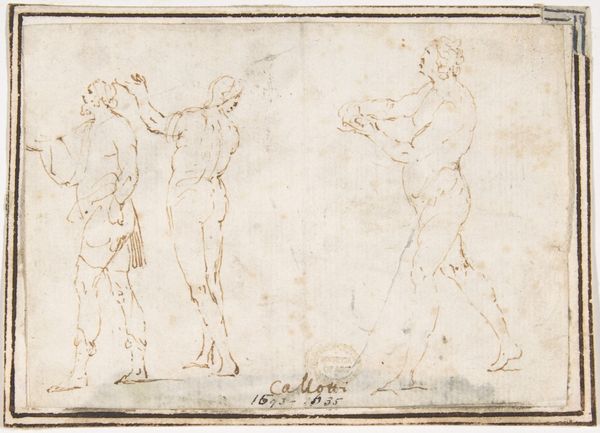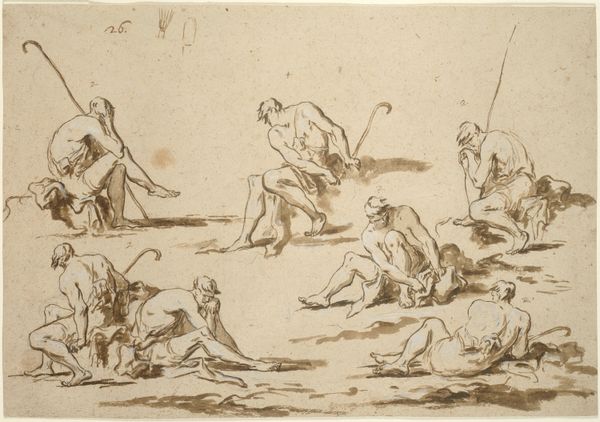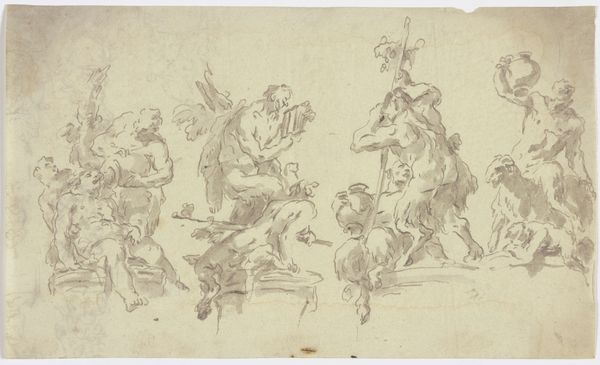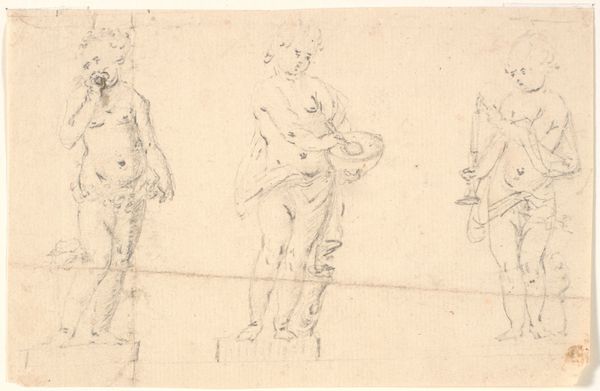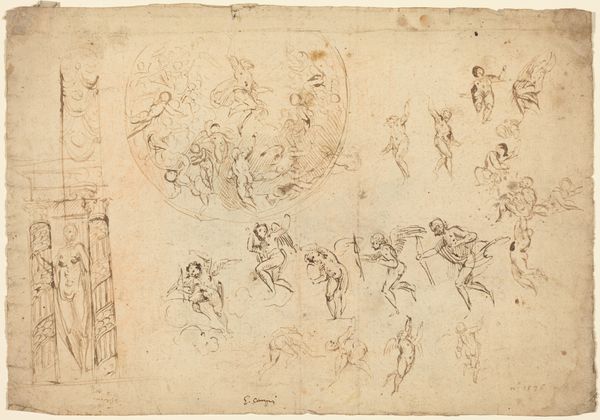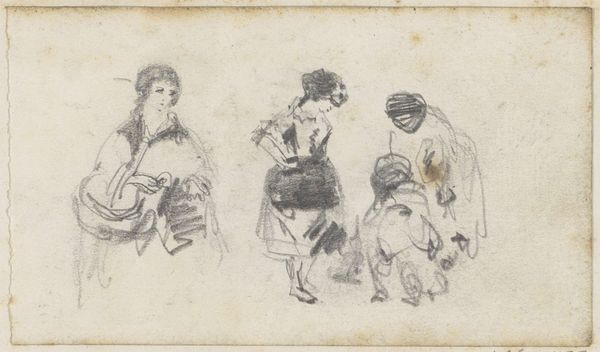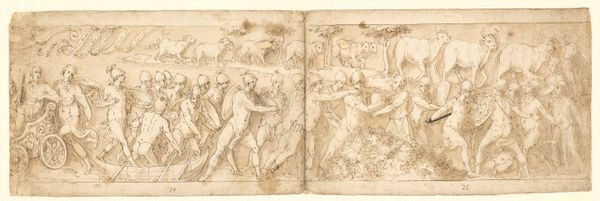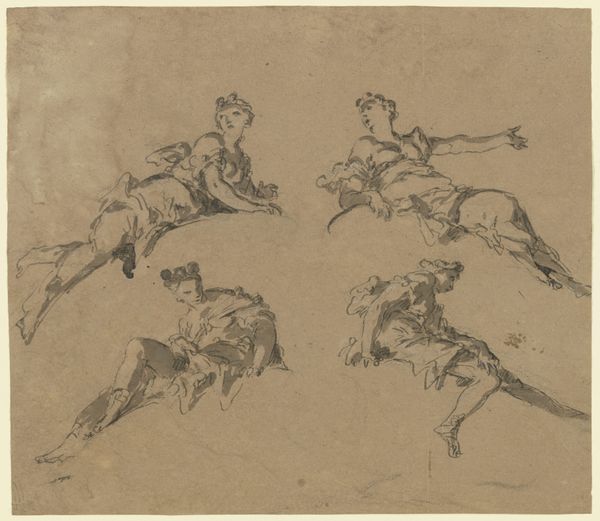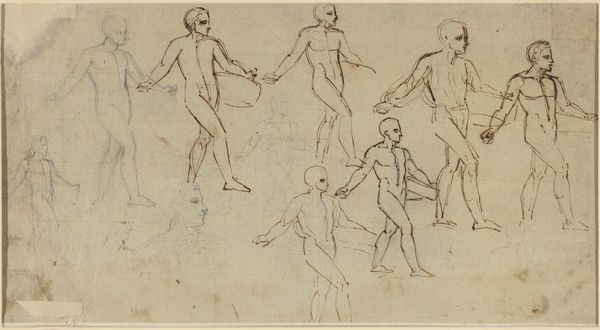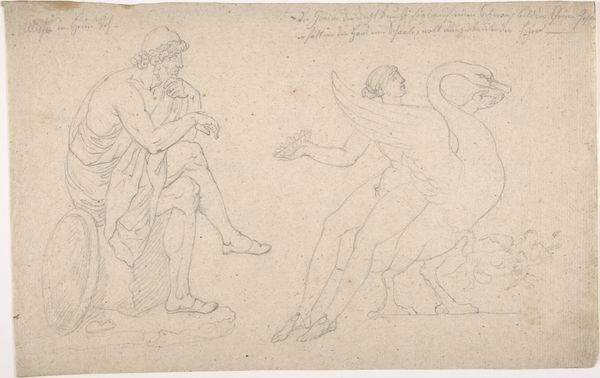![Head of a Woman and Studies of a Male Nude [verso] by Francesco Fontebasso](/_next/image?url=https%3A%2F%2Fd2w8kbdekdi1gv.cloudfront.net%2FeyJidWNrZXQiOiAiYXJ0ZXJhLWltYWdlcy1idWNrZXQiLCAia2V5IjogImFydHdvcmtzLzkwYWMwODVmLTNhZGQtNDYyNC04NWYzLTYxMWM1ZmZmOTFiOC85MGFjMDg1Zi0zYWRkLTQ2MjQtODVmMy02MTFjNWZmZjkxYjhfZnVsbC5qcGciLCAiZWRpdHMiOiB7InJlc2l6ZSI6IHsid2lkdGgiOiAxOTIwLCAiaGVpZ2h0IjogMTkyMCwgImZpdCI6ICJpbnNpZGUifX19&w=3840&q=75)
drawing, paper, ink
#
drawing
#
figuration
#
paper
#
11_renaissance
#
ink
#
academic-art
#
italian-renaissance
#
nude
Dimensions: overall: 44 x 57 cm (17 5/16 x 22 7/16 in.)
Copyright: National Gallery of Art: CC0 1.0
Curator: Immediately striking, this drawing by Francesco Fontebasso showcases studies of the human form. Editor: It’s a bit chaotic, almost like a page ripped from a sketchpad, isn't it? I’m drawn to the layered quality of ink on paper, the immediacy feels revealing. Curator: Precisely. Made using ink on paper, these quick studies demonstrate the artist's process. You get a real sense of the labor involved in mastering the depiction of the human figure. Editor: And the historical context is significant. During the Renaissance, artists like Fontebasso were heavily influenced by classical ideals of beauty and proportion. The academy encouraged the rigorous study of anatomy from life models, which led to the production of such studies. These drawings were crucial for developing compositions for larger, more public-facing works. Curator: Absolutely. It's easy to forget that such preliminary studies often remained behind the scenes. Fontebasso might have used this in his own workshop, perhaps training apprentices or just developing his own understanding of form and movement. This provides insights into the consumption habits within an artist's own ecosystem. Editor: Think about the role of patronage here, too. While the final paintings often celebrated powerful figures or religious narratives, these more intimate studies, circulated among a select audience, promoted Fontebasso’s skills. The institutional and social pressures all played a part in driving and giving purpose to works such as these. Curator: You're right to bring that up. And looking closer at the material – the texture of the paper, the gradations of the ink – emphasizes this inherent relationship between artistic intention and materiality, showcasing labor within a studio system. Editor: I’m thinking about the implied presence of those patrons who saw and commissioned works, and even potentially accessed sketches like these... that interplay of artistic creation and broader socioeconomic contexts adds a layer of political narrative for audiences to observe within these Renaissance era figurations. Curator: Considering those intricate social relations really highlights how multifaceted a drawing like this becomes. Editor: Absolutely, a tangible example of the complex layers within artistic creation and its reception.
Comments
No comments
Be the first to comment and join the conversation on the ultimate creative platform.
